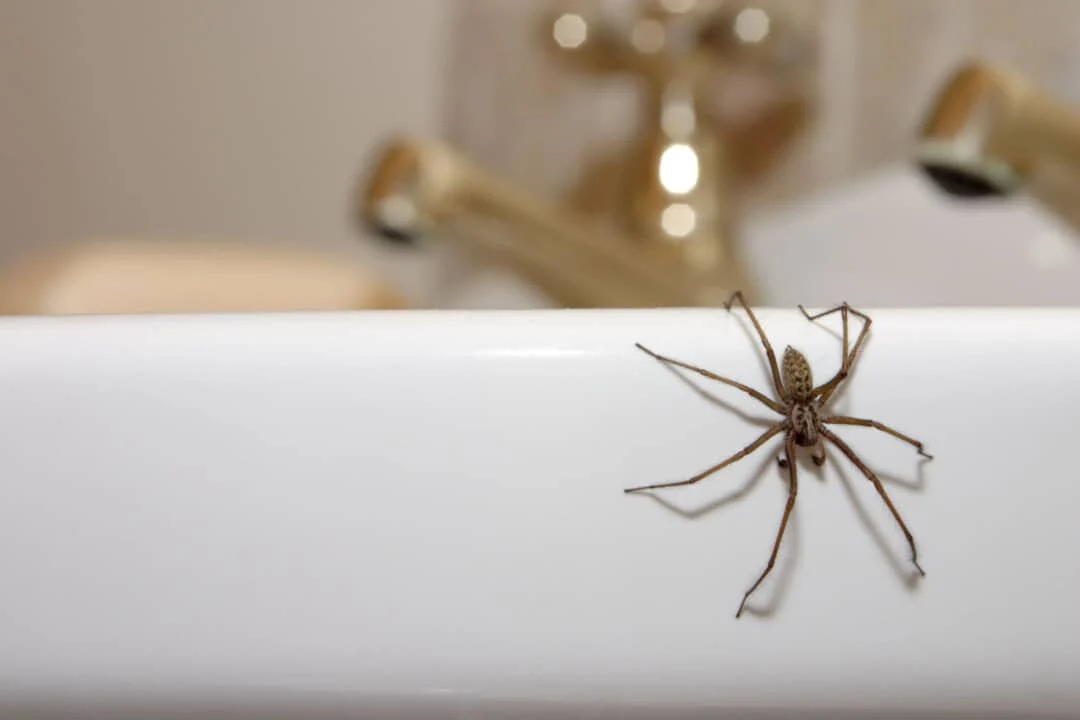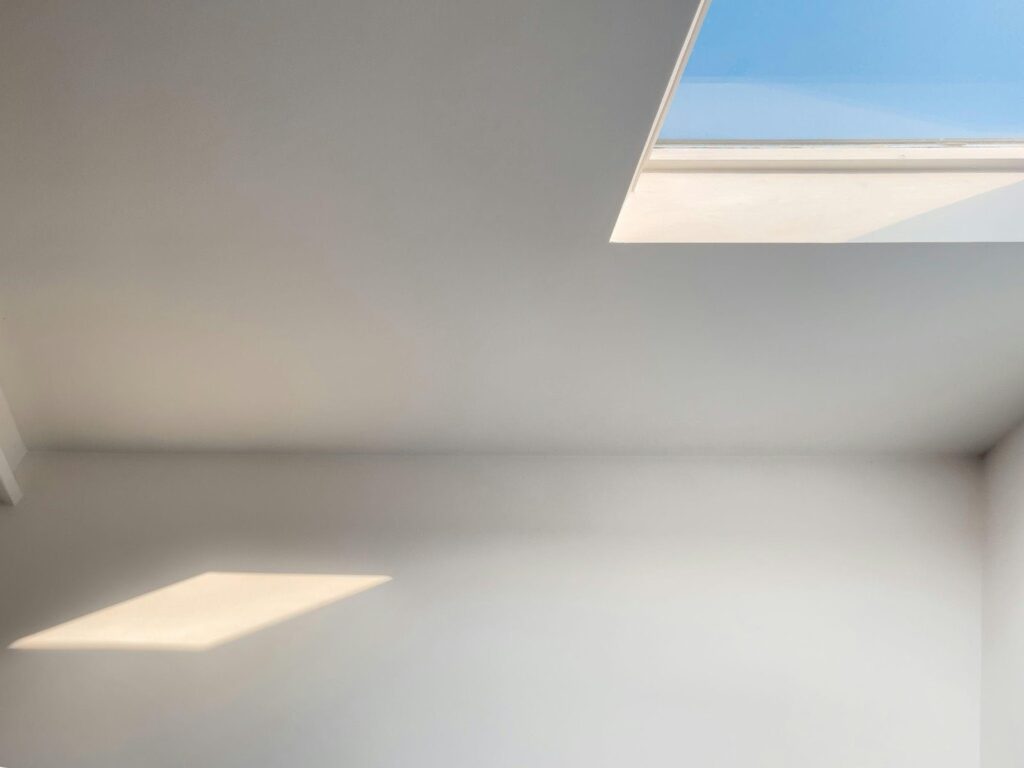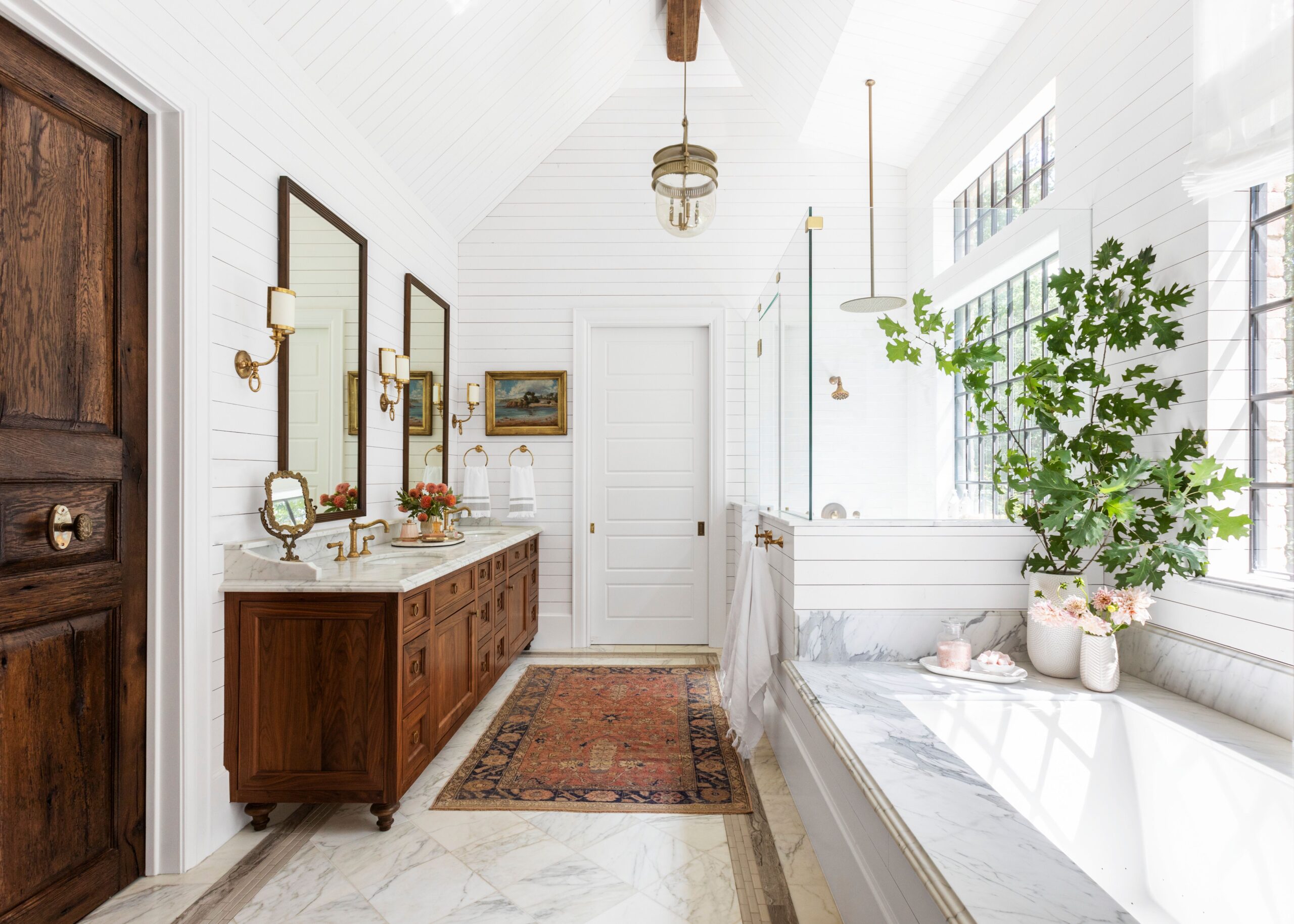Spiders can enter baths through windows, drains, or gaps. They’re attracted by moisture and small insects. Regular cleaning and sealing openings can help keep them out.
Do you ever feel startled by seeing a spider lurking in your bathroom?
It’s a common occurrence that can leave us feeling uneasy and wondering how these eight-legged creatures manage to infiltrate our sacred bathing space.
In this article, we’ll reveal the mystery and explore the fascinating ways in which spiders find their way into bathrooms.
From exploring their clever entry points to understanding their motivations, get ready to uncover the secrets behind these unwelcome bathroom guests.
So, if you’ve ever wondered how spiders manage to get in the bath, hold on tight as we dive into this intriguing investigation.
How Do Spiders Get in The Bath? – The Common Entry Points
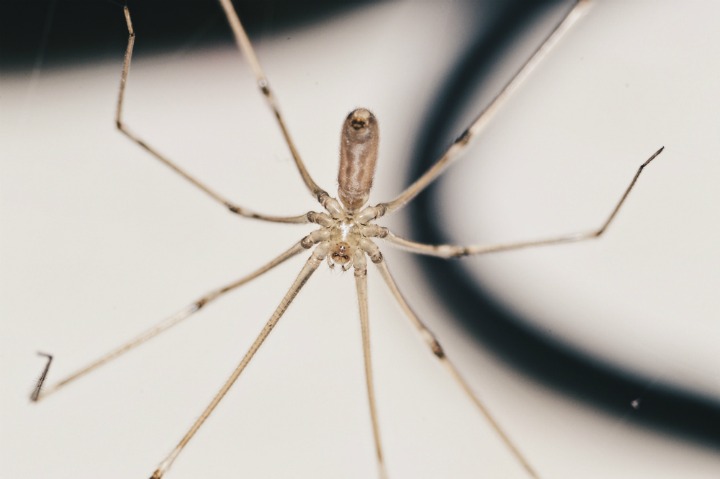
Spiders ending up in the bath is a common occurrence that can be attributed to their natural behaviors, environmental factors, and the design of our living spaces.
Here’s an in-depth exploration of the common entry points through which spiders might find their way into your bath:
Open Windows and Doors: Spiders are known for squeezing through small openings. Open windows and doors, even those with screens, can provide spiders with a pathway into your home, including your bathroom.
The attraction might be a result of outdoor lights drawing insects near windows.
Gaps and Cracks: Small holes and cracks in walls, ceilings, floors, and around plumbing or utility entry points can serve as entryways for spiders. Even the tiniest of openings can be sufficient for them to slip through, especially since their bodies are flexible.
Ventilation Systems: Bathrooms often have ventilation systems with ducts leading outside. If these ducts are not adequately sealed or have openings, spiders can crawl in through them, seeking refuge from outdoor conditions.
Utility Openings: Pipes, cables, and wires entering your home from the outside can create gaps that spiders can exploit to enter. These openings are often found in walls and can serve as pathways for spiders to access your bathroom.
Climbing Surfaces: Spiders are adept climbers, and they can ascend walls, curtains, and even plants to explore your living space. Spiders might climb in from the exterior if your bathroom has windows near trees or bushes.
Moisture and Attraction to Insects: Bathrooms naturally have moisture because of water sources, creating a humid environment that attracts insects.
Spiders might be attracted to the humidity, which can sustain their own needs, and draw in insects that are attracted to dampness.
Insects as Prey: Spiders are predators and actively hunt insects for sustenance. Bathrooms are often home to insects such as flies, mosquitoes, and ants, which can inadvertently become a food source for spiders.
Accidental Falls: Spiders move by crawling, and sometimes they can inadvertently fall from ceilings, walls, or other high points into your bath.
Their accidental falls can be more common in bathrooms due to the frequent presence of smooth, vertical surfaces.
Dark and Sheltered Corners: Bathrooms often have corners, cabinets, and hidden spaces where spiders can find shelter.
These areas might also contain insects, making them attractive for spiders to explore and establish temporary homes.
Housekeeping Habits: Lack of regular cleaning or clutter can provide hiding spots for spiders and their prey. Dust, cobwebs, and debris can create environments conducive to spider infestations.
In conclusion, the various ways spiders can end up in your bath are a combination of their natural behaviors, your home’s architecture, and environmental factors.
Seal openings, keep things clean, and reduce insects to prevent spiders from entering your bathroom.
Practical Tips for Preventing Spiders from Entering the Bath
Preventing spiders from entering your bath requires a combination of proactive measures to deter their access and make the environment less attractive to them.
Here are practical tips supported by in-depth research:
- Thoroughly inspect windows, doors, utility openings, and gaps in walls. ” write in simple sentence without changing the meaning
Here’s how to seal the cracks in walls and windows to prevent spider’s entry into the bathroom,
- Inspect: Identify and thoroughly examine the walls for any visible cracks or gaps where spiders could potentially enter.
- Clean and Prepare: Clean the areas around the cracks to ensure proper adhesion. Remove dirt, debris, and loose paint from the surface.
- Choose Sealant: Select an appropriate sealant, such as silicone or caulk, that is suitable for both indoor and outdoor use. Make sure it’s weather-resistant and flexible to accommodate any movement.
- Apply Sealant: Carefully apply the sealant into the cracks, ensuring it fills the gaps completely. Use a caulking gun for precision. Smooth the surface with a putty knife for a neat finish.
Let the sealant dry and cure as per the instructions from the manufacturer.
- Fit windows and vents with screens that have a fine mesh to prevent spiders and other insects from entering. Regularly check and repair damaged screens.
- Put door sweeps at the bottom of outside doors to stop spiders from crawling in through gaps. Make sure the sweeps are in good condition and provide a snug fit.
- In the evening, when lights attract insects, either close windows or use screens to keep both insects and spiders out of your home.
- Outdoor lights can draw insects near windows, which in turn attract spiders. Use yellow or sodium vapor lights, which insects find less appealing.
- Maintain a clear space between bushes, trees, and your home’s exterior. This minimizes the chances of spiders using vegetation to access your bathroom.
- Clutter provides hiding spots for spiders and their prey. Regularly clean and declutter your bathroom, paying special attention to dark corners and hidden spaces.
- Keep your bathroom well-ventilated to lower humidity since spiders are drawn to damp spaces. Use exhaust fans to keep the air dry and discourage spiders from seeking shelter.
- Regularly clean and remove existing spider webs. This reduces the spider population and eliminates visual cues that might attract new spiders.
- Minimize the presence of insects in your bathroom by fixing leaky faucets, sealing food containers, and cleaning up crumbs. Without a ready food source, spiders are less likely to linger.
- Some essential oils, like peppermint, citrus, and eucalyptus, are believed to repel spiders. Mixing a few drops with water and spraying it around entry points might deter them.
- Regularly vacuuming and dusting help eliminate spiders’ hiding spots and potential growth.
A terrible experience with the spider in the bath – A practical experience
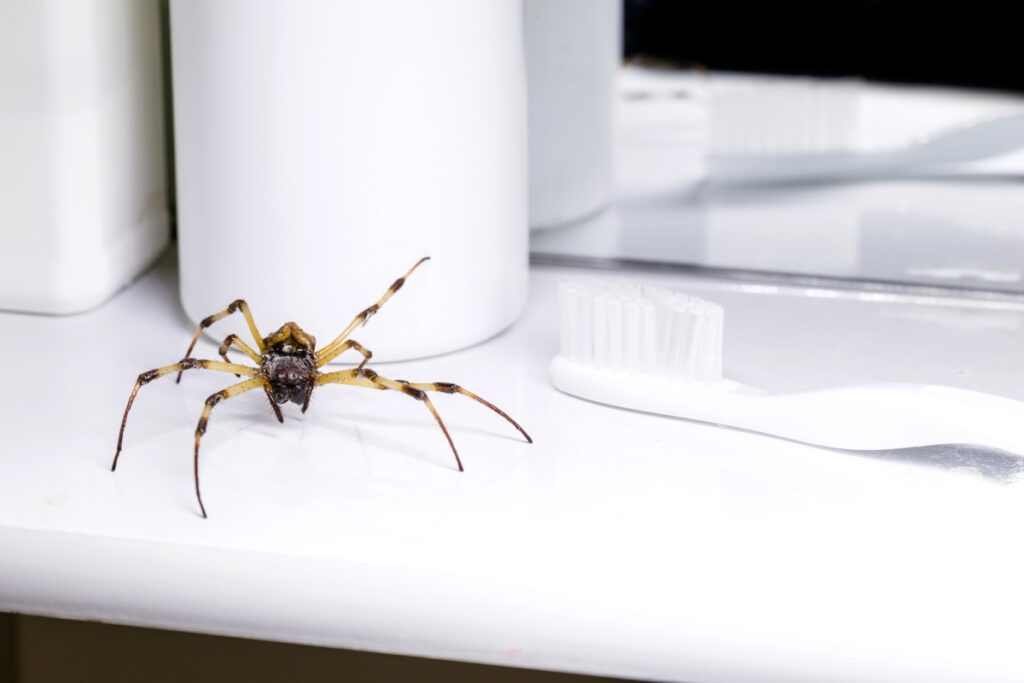
One evening, as I was getting ready for a relaxing bath, I noticed a large spider nestled in the corner of the bathtub.
Instantly, my heart raced, and a sense of panic set in. Despite my fear, I knew I had to deal with the situation.
Armed with a broom and a dustpan, I cautiously approached the spider, my heart pounding.
With shaky hands, I managed to sweep it into the dustpan and release it outside. The incident left me on edge for the rest of the bath, with every tiny movement making me jump.
Since then, I’ve been extra cautious, always checking the bath before stepping in.
FAQs
How do spiders end up in the bath?
Spiders can accidentally find their way into your bath through open windows, door gaps, or other openings in your home. They might also be attracted by moisture and insects that are drawn to water sources.
Do spiders purposely enter baths?
No, spiders don’t deliberately enter baths. They typically prefer dry, sheltered areas but can end up in baths while exploring their surroundings.
Why do I find spiders in my bath so often?
Spiders might be more commonly found in your bath due to the cool and moist environment, which can attract insects that they prey upon. Additionally, the smooth surfaces of the bath can make it difficult for them to escape.
How can I prevent spiders from getting into my bath?
To reduce the likelihood of spiders ending up in your bath, ensure windows and doors are properly sealed, and use screens to block openings.
Regularly clean and dry the bathroom to eliminate potential insect prey.
What should I do if I find a spider in my bath?
If you’re comfortable doing so, you can gently help the spider out of the bath using a cup and a piece of paper. Otherwise, leave it alone; it will likely find its way out eventually.
Are all spiders harmful or dangerous?
No, not all the spiders are harmful or dangerous. The majority of spiders are harmless and play a crucial role in controlling insect populations. Very few spiders can become a threat to humans.
Can I use spider repellents to keep them out of my bath?
Yes, you can use the spider repellents to keep them out of your bath
While some commercial spider repellents are available, their effectiveness can vary.
But, Keeping your bathroom clean and reducing insect attraction is generally more effective at preventing spiders than relying solely on repellents.
Why do spiders struggle to climb out of baths?
Smooth and steep sides of baths make it difficult for spiders to gain traction and climb out. Their leg structures are adapted for crawling on rough surfaces.
What can I use to help a spider climb out of the bath?
Placing a textured surface, like a piece of cardboard or a rough cloth, at one end of the bath can provide a way for the spider to climb out.
Is it true that some spiders can swim?
Yes, some spider species can swim or move on water’s surface due to their hydrophobic leg hairs. However, this behavior is relatively rare and might not apply to the spiders you find in your bath.
Conclusion
Spiders may find their way into baths primarily due to seeking moisture, warmth, or prey. To remove them, a simple method involves using a cup or glass to catch the spider and then release it outside carefully.
Alternatively, a spider can be gently guided into a container using a piece of paper or card and released outdoors. It’s important to remember that most spiders are harmless and play a beneficial role in the ecosystem by controlling other insect populations.







